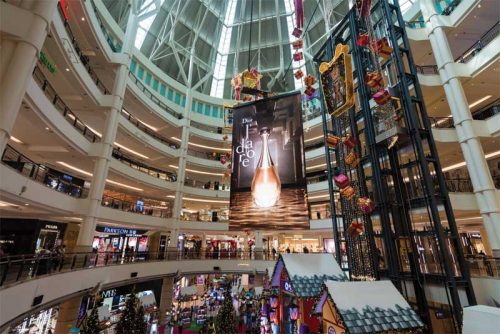Servicizing makes visualization affordable for smaller organizations

Large-format digital displays have never been things to simply unbox and hang on the wall, but for decades this was how many manufacturers did business.
High-end display technology has typically been reserved for bigger organizations flush with cash. Sporting venues, casinos, universities, and major corporate players can afford expensive displays, while others cannot. This has left several organizations underserved by the industry and has artificially shrunk the customer pool for integrators and manufacturers. However, this no longer needs to be the case. Instead of an expensive upfront price tag, servicized options allow customers to pay as they go with predictable monthly payments that align with the goals and limitations of their business. These periodic costs are typically cheaper than competing loan options and also provide budgetary certainty, which allows customers to know exactly how much they will be spending each month.
Another benefit of servicizing visualization solutions is these products never become a financial anchor down the line. A digital display bought upfront becomes a depreciating asset immediately. Servicization saves customers from the potential pitfalls of buying a late-model display solution as a way to dodge the high costs of a brand new item.
Digital displays have become cheaper over time as manufacturing streamlines and the industry expands. Late-model displays have been attractive to budget-conscious consumers for the same reasons other older audiovisual (AV) products are: if it seems like the same product, why overpay for the newest version? This is a mistake many customers make. Each visualization upgrade contains greater functional differentiation than any of its predecessors and purchasing an older product only accelerates future concerns over obsolescence while denying audiences the visual experience one intended to give them.
Through servicization, cost-cutting customers do not need to settle for an older product. They can get the best solutions by simply paying for it as a service they subscribe to rather than a product they own outright.
Servicizing: Returning immediate ROI helps balance a budget sheet
ROI for display technologies are not positive immediately when products are purchased upfront. The price tags for large-scale visualization solutions are usually significant enough that it takes several years for customers to recoup positive value. Many digital displays are installed only for their esthetic value rather than revenue-generating potential, but this approach is typically adopted by larger organizations that can afford to do so. For smaller organizations, a digital display needs
to start providing a tangible return quickly. Servicization makes this possible. In many cases, ad space sales on a display exceed the cost of the program through which a display was acquired; this means a light-emitting diode (LED) display can become ROI positive the moment it begins operation. This makes visualization solutions a much-easier sell to organizations that might be concerned about the cost of LEDs.
Customer service is important for servicizing to work
Visualization providers that sell their products as a service are paid by unit-of-service rendered rather than unit-of-product sold. This eliminates the immediate return of an upfront payment and incentivizes sellers to nurture relationships with their customers.
This transfers risk from buyers to sellers. If a customer experiences a problem, it is in the manufacturer’s financial interest to solve it. If a customer has a question, the manufacturer’s revenues demand they provide an immediate answer. This refers to an extended product responsibility to the customer.
In this case; however, manufacturers are not tied to their products’ performance for environmental reasons, but because they have a financial imperative. If a manufacturer fails to be responsive and responsible, customers will look elsewhere.
Companies should see themselves as more than a simple display manufacturer. Customer relationships are critical and go a long way; hence transactions should not end after displays are installed, even if they are purchased as a product. Display solutions are not quick fixes; instead they are versatile, reliable answers to enduring challenges.
Since manufacturers offering servicized programs rely on positive relationships with their customers more heavily than they would if they simply sold products traditionally, giving customers the tools to operate their technology confidently is crucial. They can offer comprehensive display network management programs or softwares to relieve customers from the burden of becoming an expert on the inner machinations of their visualization solution.





